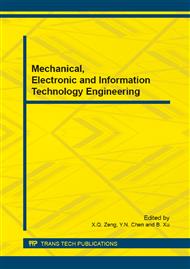p.824
p.828
p.836
p.840
p.845
p.852
p.861
p.866
p.876
A New Ray Tracing Method Based on Linear Travel-Time Interpolation
Abstract:
In the application of industrial flaw detection, the materials to be detected are often a collection of a background area and a small amount of defect areas. In traditional linear travel-time interpolation (LTI) method, the assumption of travel-time linearity will lead to error accumulation when the rays go through multiple cells. In order to reduce the cumulative error in this application, a new ray tracing method is proposed based on linear travel-time interpolation. In our method, calculation points are located on the boundaries between different areas to determine the angle of refraction. Moreover, the minimum travel-time of each point is computed by multidirectional loop strategy, which will make the traced ray path conforms to the condition of minimum travel-time when ray transports from the reverse direction. The simulation results show that using the proposed method to calculate travel-times and paths of tracing rays, it is more rapid and accurate than traditional LTI method and cross-scanning LTI method.
Info:
Periodical:
Pages:
845-851
Citation:
Online since:
March 2015
Price:
Сopyright:
© 2015 Trans Tech Publications Ltd. All Rights Reserved
Share:
Citation:


